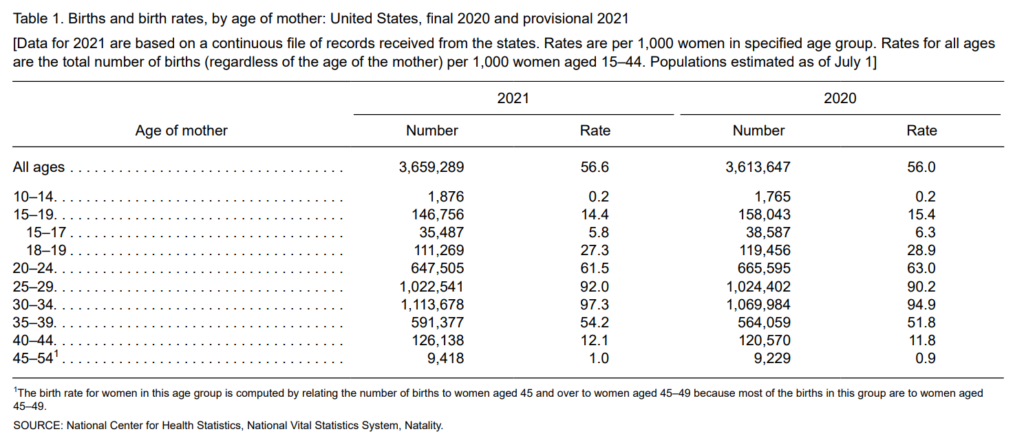Link: https://www.wsj.com/articles/u-s-births-increase-for-first-time-since-2014-11653364861
Graphic:

Excerpt:
U.S. births increased last year for the first time in seven years, according to federal figures out on Tuesday that offer the latest indication the pandemic baby bust was smaller than expected.
American women had about 3.66 million babies in 2021, up 1% from the prior year, according to provisional data from the Centers for Disease Control and Prevention’s National Center for Health Statistics. It was the first increase since 2014. The rebound spanned age groups, with birthrates rising for every cohort of women age 25 and older.
Births still remain at historically low levels after peaking in 2007 and then plummeting during the recession that began at the end of that year. The total fertility rate — a snapshot of the average number of babies a woman would have over her lifetime — was 1.66 last year, up from 1.64 the prior year, when it fell to the lowest level since the government began tracking it in the 1930s.
Author(s): Janet Adamy and Anthony DeBarros
Publication Date: 24 May 2022
Publication Site: WSJ




